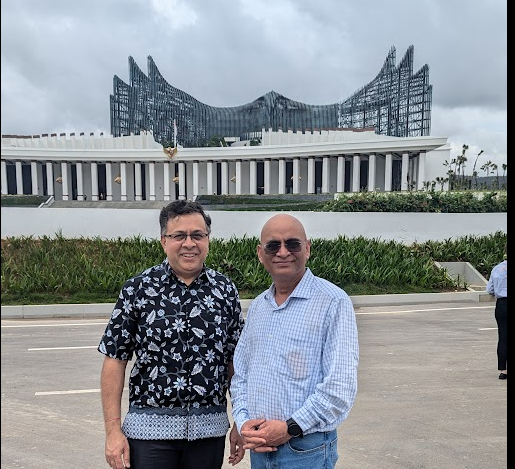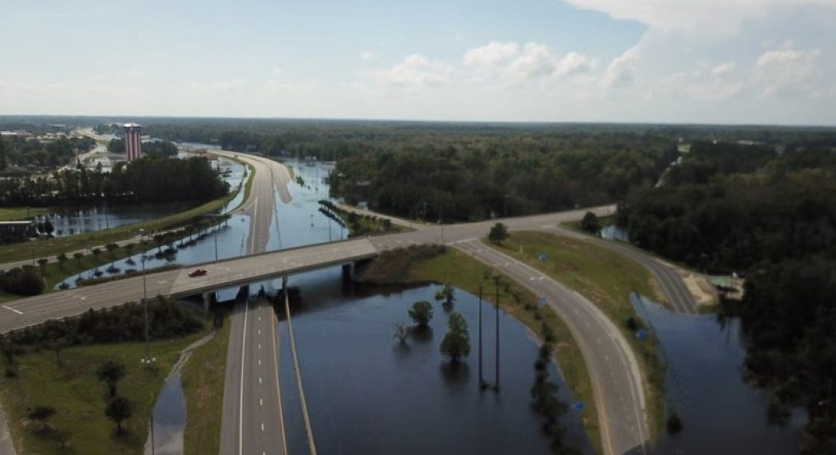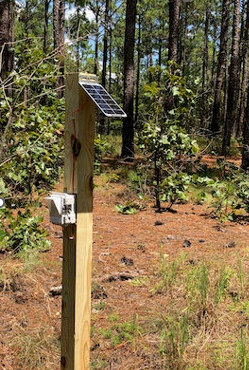Imagine a future where urban living is seamlessly integrated with technology, making our cities more efficient, sustainable, and livable. Welcome to our exploration of innovative urban solutions observed during our recent visit to Southeast Asia. The cities of Manila Metro, Jakarta, Nusantara, and Badung are at the forefront of smart city development, implementing cutting-edge technologies and strategies to enhance urban living. This post highlights ten remarkable initiatives that not only address pressing urban challenges but also serve as valuable examples for cities around the world. Join us as we delve into these transformative ideas that are shaping the future of urban environments. 1. Jakarta’s Smart Mobility Revolution Jakarta’s smart mobility initiative is transforming the city’s notorious traffic. AI-powered traffic lights adjust in real-time to traffic flow, reducing congestion and commute times. The city has also launched a bike-sharing system and a real-time public transport tracking app, making it easier for residents to choose eco-friendly transportation options. This holistic approach is not just easing traffic; it’s also reducing the city’s carbon footprint. 2. JAKI: Jakarta’s Super App The JAKI app is Jakarta’s digital Swiss Army knife. It allows residents to report city issues, book public services, and even register marriages online. During the pandemic, it became a crucial tool for COVID-19 information and vaccination bookings. The app’s success lies in its user-friendly interface and constant updates based on citizen feedback, making it a model for other cities looking to digitize their services. 3. Badung’s Command Center: Mission Control for Cities Badung’s Command Center is the nerve center of the city’s smart operations. It integrates data from various sources, including traffic cameras, weather stations, and emergency services, to provide real-time insights and facilitate quick decision-making. The center has been particularly effective in managing natural disasters, coordinating responses to floods and landslides with unprecedented efficiency. 4. Bali ASECH: Digital Ecosystem on Steroids The ASECH (ASEAN Smart Cities and Economic Hub) in Bali is more than just an innovation center; it’s a catalyst for regional cooperation. It hosts regular hackathons and smart city challenges, bringing together minds from across Southeast Asia. The center has already incubated several successful startups focusing on urban solutions, from smart agriculture to AI-powered tourism services. 5. Manila’s Smart City Swagger Manila’s recent smart city award from the International Data Corporation (IDC) recognizes its innovative approach to urban challenges. The city has implemented a smart flood control system that uses IoT sensors to predict and manage flooding. Additionally, Manila’s shift to digital payments for government services has significantly reduced corruption and improved efficiency, setting a benchmark for other cities in the region. 6. Nusantara: The Green Dream Nusantara, Indonesia’s planned new capital, is designed with sustainability at its core. The Nusantara Capital City (IKN) will help Indonesia achieve its target of becoming a developed country by 2045, as outlined in the Indonesia 2045 Vision. Beyond the impressive 70% green space allocation, the city plans to use autonomous electric vehicles for public transport and implement a smart grid system for efficient energy distribution. Nusantara’s ambitious plans serve as a living laboratory for sustainable urban development practices. We saw these small truck size boxes converting humidity in the air to drinking water. 7. Badung’s Trash Talk Badung’s smart waste management system is revolutionizing how the city handles refuse. AI-powered sorting facilities can identify and separate different types of waste with high accuracy, significantly improving recycling rates. The system also includes smart bins that compact waste and signal when they need emptying, optimizing collection routes and reducing the carbon footprint of waste management vehicles. 8. Manila’s Data-Driven Decisions Metro Manila’s embrace of data analytics is reshaping urban governance. The city uses predictive analytics to anticipate crime hotspots, allowing for more efficient police deployment. In education, data analysis has helped identify at-risk students, enabling early intervention programs. This data-driven approach is not just improving services; it’s also increasing trust in local government by making decision-making processes more transparent. 9. Jakarta’s Safety Net Jakarta’s smart surveillance system goes beyond just cameras. It incorporates AI-powered facial recognition and behavior analysis to detect potential security threats. However, the city has also implemented strict data protection policies to address privacy concerns. The system has not only improved public safety but also aided in disaster management, helping to coordinate evacuations during flooding events. More on our Jakarta visit here. 10. Nusantara’s Inclusive Future Nusantara’s commitment to inclusivity is evident in its urban planning. The city is designing accessible public spaces and implementing universal design principles in its infrastructure. The plan calls for keeping more than 60% of the city green – trees, trails, greenways. Nusantara plans to offer free coding and digital literacy classes to ensure all residents can benefit from and contribute to the city’s smart initiatives. This approach could set a new standard for social equity in smart city development. These innovations show how Southeast Asian cities are leading the way in urban transformations. They’re not just implementing cool tech; they’re addressing real urban challenges and improving quality of life for their residents. These examples are great use cases for cities around the world adapting and implementing similar solutions to create smarter, more livable urban environments. A recent Ipsos Predictions Survey 2025 – shows level of optimism in each country. How much do you think Smart City conveniences contribute to the high levels of optimism in Philippines and Indonesia? Got any thoughts on these innovations? Drop a comment below! And hey, maybe your city will be the next smart city superstar! Ready to be part of the urban revolution? Book a demo with Varidx today and discover how our cutting-edge technologies can transform your city!
Revolutionizing Disaster Response: The USDOT and NCDOT Drone Program When Hurricane Florence made landfall in North Carolina in 2018, first responders faced a daunting challenge: How do you assess damage and coordinate relief efforts when roads are submerged and entire communities are cut off? The answer came from above, but not in the way you might expect. While emergency helicopters buzzed through the skies, a fleet of drones emerged as the unsung heroes of this natural disaster, forever changing how we think about emergency response. In the wake of natural disasters, timely and efficient response is crucial to saving lives and restoring normalcy. One of the most innovative approaches to disaster response has been the use of drones, as demonstrated by the North Carolina Department of Transportation (NCDOT) and the U.S. Department of Transportation (USDOT) after Hurricane Florence in 2018. This blog will discuss the impact of this drone program and explore additional innovations that a smart city platform can incorporate to enhance public safety and disaster management. The USDOT and NCDOT Drone Program Looking ahead, the NCDOT continues to innovate in the drone space. Building on their successful Hurricane Florence response, the agency has secured a prestigious USDOT SMART grant to revolutionize their disaster response capabilities. The centerpiece of this new initiative is the groundbreaking ‘drone-in-a-box’ technology – an autonomous system that promises to transform emergency operations. This innovative approach allows drones to be strategically positioned within communities before storms make landfall. These pre-positioned units can be activated remotely, eliminating the need for human operators to navigate potentially dangerous conditions. The implications for disaster response are significant: critical medical supplies like insulin can be staged alongside roads and delivered precisely when and where they’re needed most. What makes this system particularly powerful is its dual capability. Not only can these autonomous drones deliver life-saving supplies, but they can simultaneously capture vital imagery of disaster zones. This means damage assessment can begin immediately after a storm passes, without waiting for response teams to physically access affected areas. By removing the need to send personnel into hazardous conditions, the system prioritizes both speed of response and responder safety. This forward-thinking approach perfectly illustrates how smart city technologies are evolving to meet real-world challenges. By combining autonomous systems, remote operation capabilities, and strategic pre-positioning, the NCDOT is creating a more resilient and responsive disaster management framework that could serve as a model for departments of transportation nationwide. After Hurricane Florence devastated North Carolina, the NCDOT deployed 15 drone teams to assess the damage and aid in recovery efforts. These drones flew 260 missions, capturing over 8,000 images and videos to create a comprehensive statewide map of the affected areas. This data was instrumental in delivering supplies and restoring connectivity, especially when traditional methods like helicopters were otherwise engaged. The success of this pioneering program didn’t just prove the value of drones in disaster response – it opened our eyes to the incredible potential of integrated smart city solutions. While drones provide rapid, cost-effective aerial surveillance, they’re just one piece of a larger puzzle. Today’s cities need comprehensive, interconnected systems that can transform raw data into actionable intelligence. Here’s where innovations in smart city platforms come into play. Innovations for a Smart City Platform To further enhance disaster response and public safety, AI based smart city platforms can integrate a range of innovative technologies. Here are some key innovations that can be added: Connecting Phone Map Apps: Integrating real-time data from various sources into phone map applications can provide residents with up-to-date information on road closures, safe routes, and emergency services. This helps people navigate safely during disasters. Sending Updates Directly to the Public: Utilizing push notifications and SMS alerts, smart city platforms can send real-time updates directly to residents’ phones. This ensures that critical information, such as evacuation orders and safety instructions, reaches the public promptly. Updating Public Dashboards in Real-Time: Public dashboards that display real-time data on weather conditions, flood levels, and emergency services can keep residents informed and prepared. These dashboards can be accessible via websites and mobile apps. Mobile Fleet of Drones: Having a mobile fleet of drones ready to be deployed anywhere in the city can significantly enhance disaster response. These drones can be used for aerial surveillance, damage assessment, and delivering supplies to hard-to-reach areas. Tracking Cars Stuck in Floods: Using advanced sensors and GPS technology, smart city platforms can track vehicles stuck in floodwaters. This information can be relayed to emergency responders, enabling them to direct assistance to those in need quickly. Smart Traffic Management: Implementing smart traffic management systems that use real-time data to optimize traffic flow can help prevent congestion and ensure that emergency vehicles can reach affected areas without delay. Community Engagement Platforms: Creating platforms where residents can report issues, request assistance, and share information can foster community resilience. These platforms can also be used to coordinate volunteer efforts and distribute resources. Predictive Analytics: With the data collected, the AI powered smart city platform can perform analytics and provide predictions about likelihood of flooding and areas that will need the most help. Conclusion The USDOT and NCDOT drone program after Hurricane Florence is a testament to the power of technology in disaster response. By integrating drones and other innovative technologies into smart city platforms, cities can enhance their resilience, improve public safety, and ensure a more efficient response to emergencies. We are optimistic that next time a hurricane like Helene strikes, the public infrastructure will endure and bounce back faster. As we continue to face the challenges of climate change and urbanization, these innovations will be crucial in building safer, smarter, and more sustainable cities. Ready to revolutionize your city’s disaster response capabilities? Visit varidx.io to schedule a demo and discover how our cutting-edge smart city platform can help your community prepare for and respond to emergencies more effectively. Don’t wait for the next disaster to strike – take action today to build a more resilient tomorrow.




